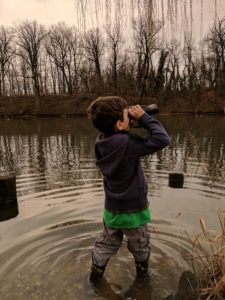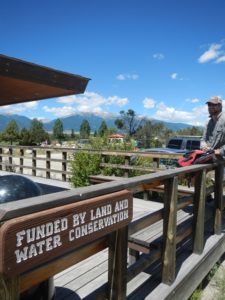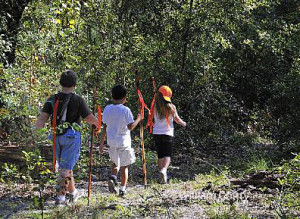We have much more to do and your continued support is needed now more than ever.
Investing in Recreation, Keeping Wildlife Within Reach

Whether or not you’ve heard of the Land and Water Conservation Fund, odds are that you have benefitted from it. Since 1964, LWCF provides funding for all the small parks, community playgrounds, recreation centers, and athletic fields throughout the country. The Land and Water Conservation Fund has invested in countless projects over the years and it’s difficult to find an area of the country that has not benefitted from this funding.
The Land and Water Conservation Fund expires at the end of September, and it’s critical that it continue investing in outdoor opportunities all across America to get kids and families out of the house and away from screens.
Supporting Recreation
Each year, the Land and Water Conservation Fund funding is divided into state and federal funding for projects that are spearheaded by four main agencies: the National Park Service, the Bureau of Land Management, the Fish and Wildlife Service, and the Forest Service. These agencies then use this money to maintain and improve existing outdoor recreation areas or to buy and acquire new ones.

Over the years, the Land and Water Conservation Fund has been able to pay for playgrounds, splash parks, baseball fields, hockey rinks, tennis courts, soccer fields, and recreation centers. Through the new Outdoor Recreation Legacy Partnership has provided millions of dollars to 22 cities to plan and build parks and other recreation facilities in underserved communities. This is especially important in communities where there simply isn’t enough funding for parks and sports fields to go around.
But beyond just helping provide communities with outdoor recreation opportunities at the local level, the Land and Water Conservation Fund has been a boon to wildlife — supporting the expansion of national monuments and wildlife refuges home to countless species. From the harbor seals and migrating birds of the Rachel Carson National Wildlife Refuge in Maine to the 52 different species of mammals that call Joshua Tree National Monument in California home, the fund has helped purchase lands to expand and protect critical habitat areas for vulnerable wildlife all across America. Since 1990, the Land and Water Conservation Fund’s Forest Legacy Program has set aside more than 2.6 million acres of forest land to be preserved for conservation and wildlife habitat.

On top of that, the Land and Water Conservation Fund also supports historical landmarks, like the Brown v. Board of Education National Historic Site in Kansas, the Women’s Rights National Historical Park in New York, the Flight 93 Memorial in Pennsylvania, and Canyons of the Ancients National Monument in Colorado. The fund even helps pay for and maintain historic battlefields in the United States like Antietam and Gettysburg so these places can continue to be educational destinations for students and Civil War buffs alike.
Congress’s Responsibility
The best part about the Land and Water Conservation Fund is that it doesn’t cost taxpayers anything — the funding comes from oil and gas companies which they pay into when they extract fossil fuels from public lands. Unfortunately, Congress frequently redirects funding from the Land and Water Conservation Fund to other projects.

The Land and Water Conservation Fund is supposed to receive $900 million per year, but Congress gets to decide how much of that they actually get to spend. Since the Land and Water Conservation Fund was created over half a century ago, Congress has only ever fully funded it once — robbing this valuable program of more than $20 billion over its lifetime. If Congress does not act by the end of September, it will disappear altogether and so will crucial funding for communities, historical monuments, and forests across the country.
Tell your member of Congress to vote to reauthorize the Land and Water Conservation fund and to pay up. A fully funded Land and Water Conservation Fund could provide Americans with $900 million to invest in their communities and provide us with more opportunities to enjoy time outside and away from screens — a respite we can all agree we desperately need.
Save LWCF




















